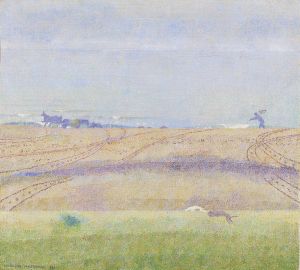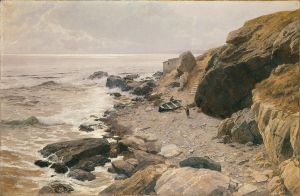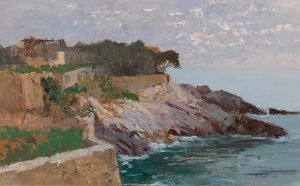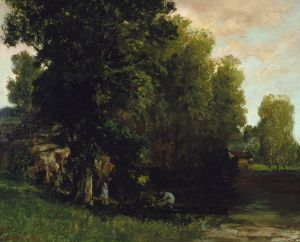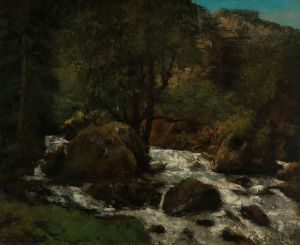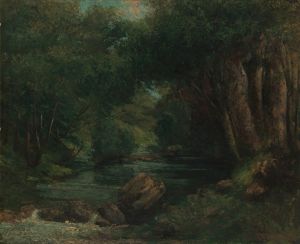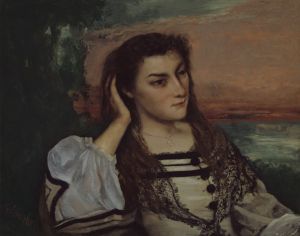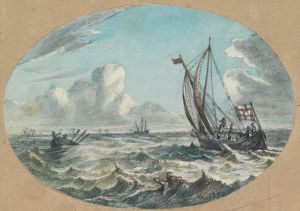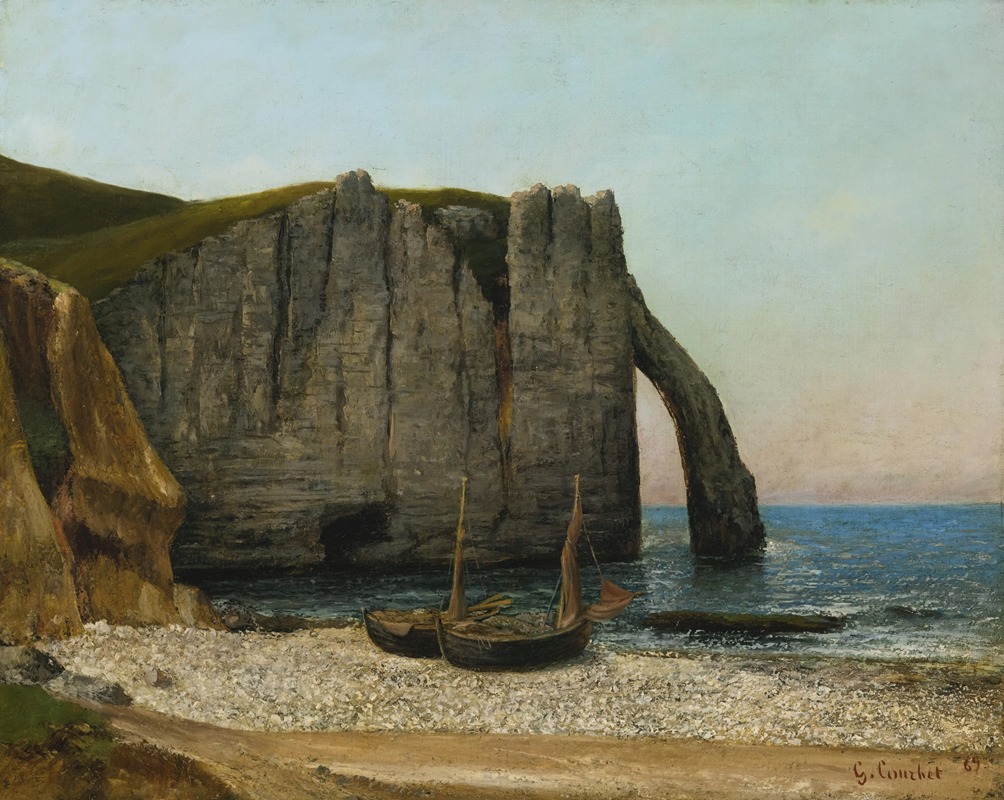
Falaises d’Étretat
A hand-painted replica of Gustave Courbet’s masterpiece Falaises d’Étretat, meticulously crafted by professional artists to capture the true essence of the original. Each piece is created with museum-quality canvas and rare mineral pigments, carefully painted by experienced artists with delicate brushstrokes and rich, layered colors to perfectly recreate the texture of the original artwork. Unlike machine-printed reproductions, this hand-painted version brings the painting to life, infused with the artist’s emotions and skill in every stroke. Whether for personal collection or home decoration, it instantly elevates the artistic atmosphere of any space.
"Falaises d’Étretat" is a painting by the renowned French artist Gustave Courbet, created in 1869. Courbet, a leading figure in the Realism movement, is celebrated for his commitment to depicting everyday scenes and landscapes with a focus on accuracy and detail. This particular work exemplifies his dedication to capturing the natural beauty of the French coastline.
The painting portrays the dramatic cliffs of Étretat, a small coastal town in the Normandy region of France. Étretat is famous for its striking natural arches and white chalk cliffs, which have inspired numerous artists, including Claude Monet and Eugène Boudin. Courbet's depiction of these cliffs is notable for its realistic portrayal of the rugged landscape and the play of light on the rock formations.
In "Falaises d’Étretat," Courbet employs a palette of earthy tones to convey the texture and solidity of the cliffs. The painting captures the grandeur and majesty of the natural scene, with the cliffs rising sharply from the sea. Courbet's brushwork is meticulous, emphasizing the geological features of the cliffs and the subtle variations in color and light. The sea is depicted with a sense of movement, its waves gently lapping against the base of the cliffs, adding a dynamic element to the composition.
Courbet's choice of subject matter reflects his interest in the natural world and his desire to represent it truthfully. Unlike the Romantic artists who preceded him, Courbet eschewed idealization in favor of a more direct and unembellished approach. This commitment to realism is evident in "Falaises d’Étretat," where the artist captures the scene with precision and fidelity to nature.
The painting is also significant for its contribution to the broader landscape tradition in 19th-century art. During this period, there was a growing interest in plein air painting, or painting outdoors, which allowed artists to observe and capture the effects of natural light and atmosphere more accurately. While it is not definitively known if Courbet painted "Falaises d’Étretat" entirely en plein air, his work demonstrates a keen observation of natural phenomena, characteristic of this approach.
"Falaises d’Étretat" is housed in the Musée d'Orsay in Paris, which holds an extensive collection of works by Courbet and other artists of the Realist movement. The painting remains an important example of Courbet's landscape work and continues to be appreciated for its technical skill and evocative portrayal of the French coastline.
Courbet's influence on the art world extends beyond his own works, as he paved the way for future generations of artists who sought to depict the world around them with honesty and integrity. "Falaises d’Étretat" stands as a testament to his enduring legacy and his ability to find beauty in the natural landscapes of France.








